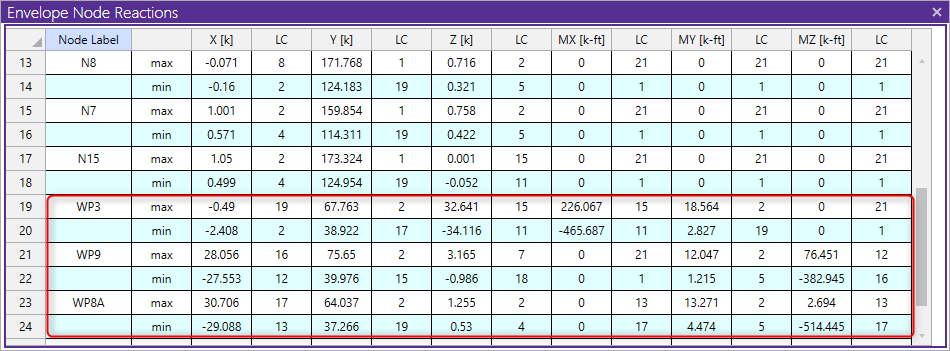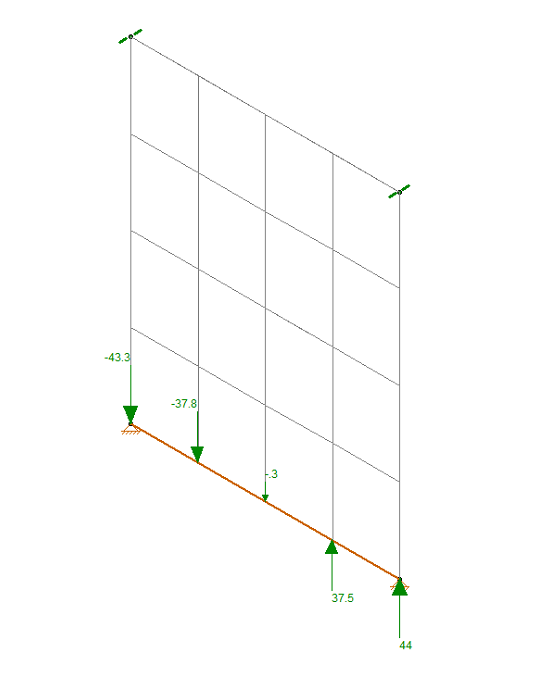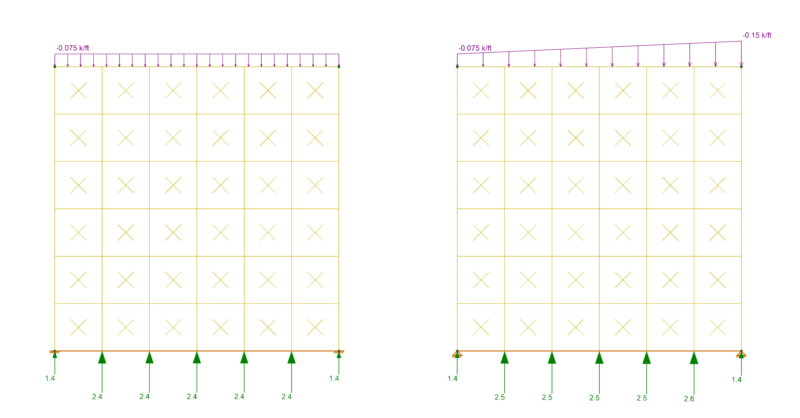Products
Learn
Support
Company
In the Node Reaction spreadsheet, all reactions from node-based boundary conditions are reported. If you look closely at some models, there may be wall panel labels in the Node Reactions spreadsheet as well. This may cause users to ask the question:”what are these reaction values for a 2-dimensional wall panel”?

The answer is that the Wall Panel Reactions represent the total reactions (resultant) for the wall about located at the center of the wall. This location does not change even if the center of the wall is within an opening, or if the edge of the wall is restrained as well as the base.
The reason why the program is reporting this for the wall is to provide the user an overall idea of the loading condition on each wall panel; such as total axial, shear, and overturning moment. In most cases, the reaction values at this location is representative of the overall loading condition.
You may also notice that these reactions are calculated using force equilibrium at the bottom center of the wall, and are not directly derived from the finite element analysis (FEA). In the actual analysis, depending on the boundary conditions the user assigned at the wall panel edge, a series of hidden boundary conditions will be assigned at the nodes between element mesh along the wall edge. The reactions from these hidden boundary conditions can be displayed by turning on the reactions.

For clarity, RISA currently does not report these mesh node reactions in a spreadsheet format due to its large quantity. If the user really wants to have these node reactions as part of the spreadsheet output, one alternative is to use a “free” edge boundary condition and manually add a series of boundary conditions along the wall panel edge. If the added boundary conditions are spaced close enough, it should be able to simulate the edge boundary conditions of the wall panels.
Below is an example of two wall panels: the left one uses a regular wall edge boundary condition at its base, the right one uses a “free” edge with a series of boundary conditions added separately. By running the analysis, you can see that the reactions are very similar. The base reactions for the right wall panel can then be viewed in the Node Reaction spreadsheet.

